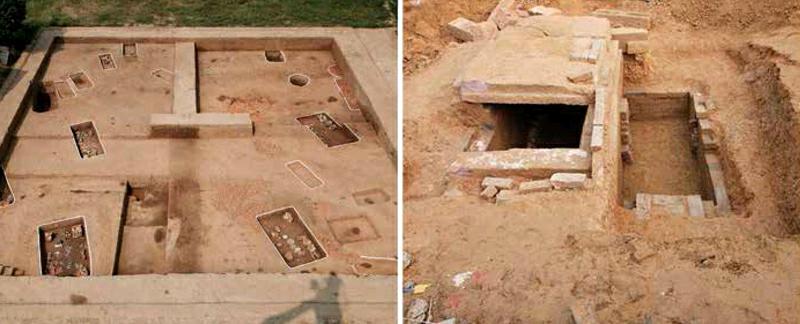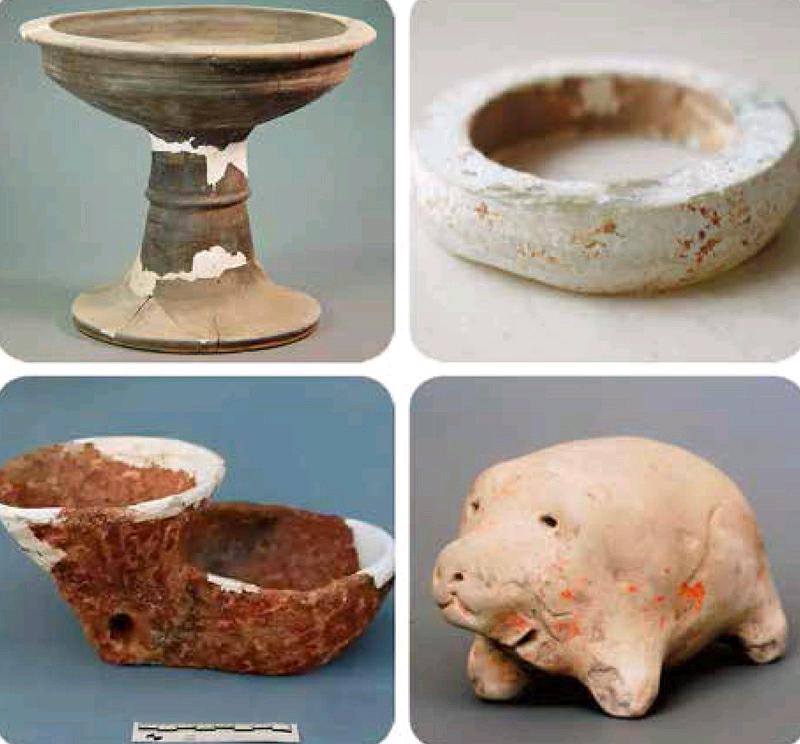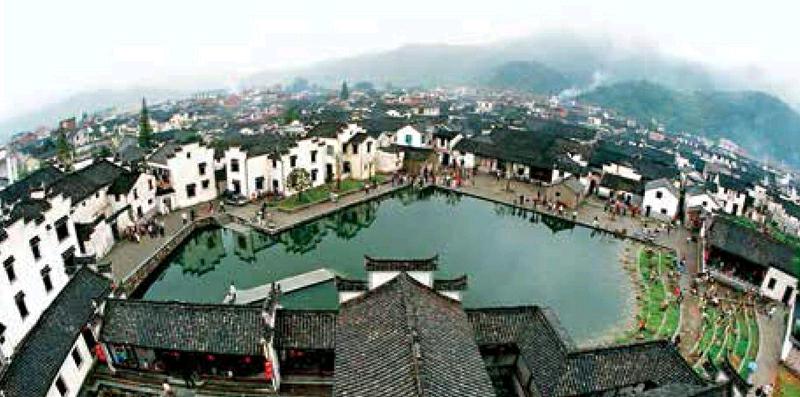启封富阳六千年的秘密
2017-12-09魏水华
魏水华
很多外地人对富阳的了解,最早可能来自于三国吴主、富春人氏孙权。这从一个侧面道出了作为历史文化名城富阳的千余年历史。
再往前细究,秦王嬴政年间,已经设置富春县。这段《史记》上的描述,是大部分人能够查阅到的最早关于富阳有2000多年历史的文献记载。
日前,一个考古项目,把富阳的历史拉长到6000年。
意外之喜:六千年的考古由来
发现考古遗存的地方叫“大源”,是个倚靠富春江边的美丽小镇。当地人告诉我,最近十几年,镇里的经济搞得不错,被选为浙江省小城镇综合改革试点镇。
而这里与考古的渊源,肇始于2010年。
当时,杭黄高铁正要施工,浙江省文物考古研究所接到任务,对沿线进行考古调查。没想到,在进行了一定程度的钻探、试掘后,在富阳大源镇境内的亭山村瓦窑里自然村南面的地层剖面里采集到一些陶片和带绳纹的砖瓦碎块,它们的年代初步判断不下数千年。考古人员确认,这里埋藏着一处古人生活遗址!
后来,杭黄高铁工程整体搁置,后续抢救性考古发掘被延误。2016年3月,省文物考古研究所联合富阳文物馆在瓦窑里遗址范围内的高铁施工工地北侧重新启动了抢救性考古发掘工作。
随后的几个月中,瓦窑里遗址出土了包括石镞、石钺、石锛、石斧在内的十余件良渚文化时期的重要文物。其中有一件鼎,下部有较典型的鱼鳍形鼎足,腹部外表装饰两圈弱脊,具有河姆渡文化遗风。
那次考古发现表明,富阳人文历史可以追溯至距今5000多年前的良渚文化时期。
谁曾想,这一年代纪录,仅仅一年后,就再次被改写。
“2016年的抢救性考古发掘,在时间上受到较大限制。”参与考古发掘的现场人员说。2017年4月底,他们再一次进驻瓦窑里自然村,对遗址进行了补充性考古发掘。
而这次发掘的成果,比之前都要丰富。
精心考据:六千年的生活细节
我来到考古现场的时候,考古工作已经接近尾声,队员们对所有出土的文物进行分类、标注和打包,对考古现场进行拍照记录和保护。
几十件出土文物中,大部分都是鼎、豆等形态的陶器,虽其貌不扬,但却能看出浓厚的历史积淀来。考古队员们告诉我,很多器物已经年久,已经和豆腐渣一样,修复难度非常大。
所以,除了田野考古之外,队员们还在这两个多月中进行了艰苦的文物修复工作,修复完成后,这些宝贝可能会成为复原五六千年前生活场景的钥匙。
省文物考古所史前室主任孙国平接受了我的采访。他介绍说,瓦窑里遗址的土地结构——根据碳14分析报告,这一区域的地层被分为四层,分别是现代的表土层、商周至唐宋时期的地层、良渚文化時期的地层和更早的马家浜文化时期的地层。
这次最重大的发现,无疑来自于最底层:马家浜文化是长江下游地区的新石器时代文化,年代约始于公元前5000年,延续了约1000年。
底层出土的文物,让考古人员欣喜不已——虽然只是多角沿豆盘的一块碎片(豆是古代用来放食物的器皿)和一块牛鼻形的器耳,但对于佐证富阳的历史有重要意义。根据专家可靠判断,它们是马家浜文化晚期的典型遗物,距今6000年左右。
它们都是6000年前,先民日常生活用的“锅碗瓢盆”。
宏大视野:六千年的社会意义
事实上,在富阳以往进行的考古发掘中,也在多个乡镇发现过良渚文化时期零星遗物。而这次在瓦窑里的考古发掘,足以说明在此地存在着一片古代墓地。“可以证明在良渚文化早期,有一部分先民已经在富阳繁衍生息了,也表明良渚文化范围自早期开始就已拓展至浙西南沿江(富春江)山地丘陵区。”孙国平认为,这些先民在富春江南岸山脚下的坡地(台地)上生产、生活,也许他们还组成了小型的村落。这是目前考古发现的富阳境内最早的先民生活场所,是最可靠的富阳历史文化的源头。
孙国平表示,“从出土器物来看,这是一个较高规格的墓葬。”其中的一件陶器,形状就像一个漏斗和一个小碗的结合体,隐约能看到古朴纹饰,“这是一个过滤器,可能是墓主人生前用于过滤酒糟的,但它既具有明显的地方文化特征,又与良渚文化核心区的同类器基本一致。”
联系去年发现的墓葬,就会发现,这是3座几乎挨在一起的墓葬。根据随葬物品,可以判断出中间的那个墓主人是男性,其左右两边的为女性。中间墓葬出土的石钺、石锛都是生产工具,在原始时代通常为男性所用,而两侧的每一座墓葬中均有小件装饰玉器和一件石纺轮出土,它们通常为女性所用。
根据已有的考古研究成果,在距今四五千年前的良渚文化时期,大致已形成了男主外、女主内的父权家庭的社会关系。“那么,当时的社会有没有可能一部分人是一夫两妻呢?瓦窑里的发现值得人们进一步关注。”孙国平抛出了一个饶有趣味的说法。
这次富阳的考古发现,不仅拓宽了当地乃至整个浙东北地区的历史宽度,更作为重要组成部分印证了“浙江7000年”的历史。书法、剑、曲、僧、琴、舟、茶、宅、藏书、青瓷,活在这些载体里的浙江,让人们看到江7000年文化历史的生命轨迹和保留到今天的新鲜记忆。
Fuyang, now a district of Hangzhou, is probably known to most people as the birthplace of Sun Quan, the king of Wu Kingdom during the Three Kingdoms period which spanned the 3rd century AD. A scholar of history may know more: Fuyang as it is known now was Fuchun County during the reign of the First Emperor of the Qin Dynasty (221-207BC). Latest archaeological finds, however, have pushed the history of Fuyang to 6,000 years ago.endprint
The first dig of the archaeological discovery started in 2010 in Dayuan, a rural town on Fuchun River. Archaeologists were instructed to take a look at the planned route of a railway between Hangzhou and Huangshan Mountains. Unexpectedly, they unearthed some pottery shards and some brick and tile shards imprinted with the pattern of rope at Wayaoli, a natural village in Dayuan town. The archaeologists tentatively concluded that it was a site of ancient people.
The excavation was called off, however, as the railway project was suspended. As the railway project kicked off again, archaeologists came back in March 2016 to the village. In the following months, they unearthed about a dozen of stone objects such as axes and arrow heads. One of the objects was a , which looks like the objects unearthed at the Hemudu Culture. The dig in March 2016 indicated that the history of Fuyang could be traced back at least to the Liangzhu Culture of 5,000 years ago.
From April to July 2017, archaeologists came back to the village again for another dig and this dig produced an unprecedented number of pottery objects. A big part of these unearthed objects are and , special vessels. The experts had a hard time to restore them as they had deteriorated badly.
Archaeologists are happy to conclude that the bottom layer of the site can be traced to the Majiabang Culture, a regional Neolithic subculture that started 5,000 years BC and lasted about 1,000 years. In other words, the excavation indicates that people lived in what is Fuyang now over 6,000 years ago.
In fact, archaeological studies in Wayaoli and other places across Fuyang indicate that Fuyang was inhabited in the early years of the Liangzhu Culture, which flourished in the northern suburb of Hangzhou whereas Fuyang is 30 kilometers southwest of Hangzhou. The ancient people in Fuyang had connection with the Liangzhu Culture as the objects they used in everyday life resemble those unearthed in the sites of the Liangzhu Culture. The connection indicates that Liangzhu Culture was spreading out even in its early phase and some ancients came to the hilly areas along Fuchun River. These ancient people might have settled down and formed a village in whats now known as Fuyang. Objects unearthed in Wayaoli comprise the most ancient and reliable evidence of the civilization in Fuyang.
The site in Wayaoli Village might contain a cemetery where some important people were buried. Archaeologists know that the Liangzhu culture was a patriarchal system, but they are not certain whether a family had one husband and two wives back then. The archaeological excavation at Wayaoli indicates that in one tomb a man was buried with two women. This question has come out of the excavation and archaeologists expect to find more to answer it in the future.
Archaeologically, Zhejiang has a history of 7,000 years and Fuyang has a history of 6,000. The evidence unearthed at Wayaoli, Fuyang has pushed back the horizons in the whole northeastern area of the province for further historical studies. Calligraphy, sword, music, Buddhism, Qin, boat, tea, house, books, and celadon are ancient hallmarks of Zhejiang. They emerged in the history of the province in different ages, indicating the width and breadth of the 7,000-year civilization in this cultured land.endprint
